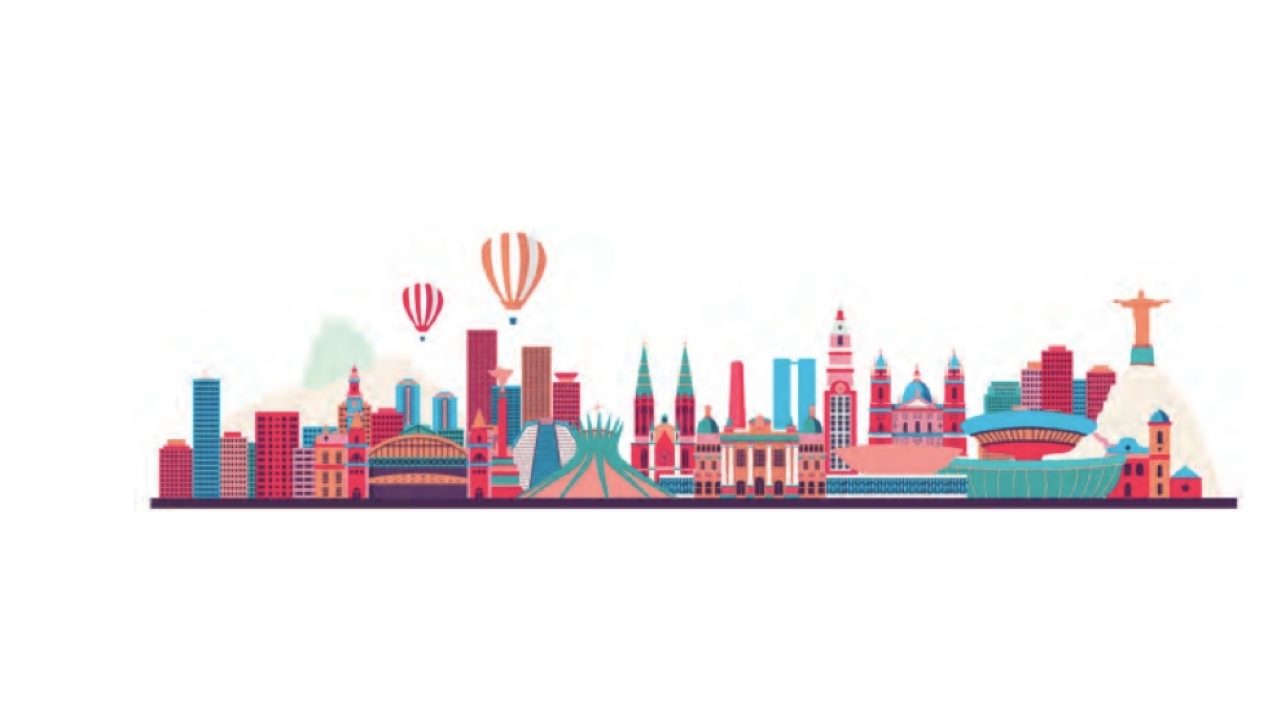2020 in review: Latin America

The world’s most urbanized region, where 80 percent of people live in cities. The most unequal, too, where a third of people live in poverty, often in sprawling slums not conducive to social distancing. A high number of people who rely on informal, cash-in-hand work, and therefore reluctant to stay at home. Latin America has been devastated by the Covid-19 pandemic. It has seen some of the world’s longest and most restrictive lockdowns, but also some of the highest rates of cases and deaths.
According to the IMF, Latin America’s GDP will contract by 8.1 percent in 2020. Most countries will not return to pre-pandemic growth levels until 2023; per capita income won’t recover until 2025.
The region’s label market, though not immune to the crisis, has fared better than many other sectors. ‘We saw a big downturn in Q2, but since then there has been a recovery, though the dynamic has varied country by country,’ confirms Ronaldo Mello, VP and GM, Label and Graphic Materials, Latin America, at Avery Dennison. ‘In Brazil, the government’s aggressive stimulus package gave money to more than 60 million people. So here the recovery has been faster. The question is what will happen in 2021 when the stimulus ends. There was a more severe recession in Mexico, but it is also recovering in the third and fourth quarters.
‘Durables is a good example of a sector which faced a major downturn. But pharma, home care and shipping labels all saw increased demand. Overall, inventories were reduced across the supply chain. But in Q3 and Q4, we are seeing a return to normal levels.’
‘Covid stopped all activity for over three months,’ reports Nick Vindel, Latin American sales manager at platemounting equipment manufacturer JM Heaford. ‘Brazil and Mexico – the biggest markets – have seen a reduction in capital expenditure. I think this is notable not just in plate mounters but also flexo presses. March to July was very quiet, but since August there has been a lot of activity leading to not just an increase in enquiries but also sales. Once the initial fear of the pandemic was overcome, customers realized that labels and flexible packaging were on the increase, with changing consumer habits resulting in a boom for packaged goods.’
Martin Fraire, CEO of Leftech Group, an Argentina-based distributor of graphic arts equipment and consumables, noted a decrease in export sales, ‘mainly due to not being able to visitor customers’. But business in Argentina remained strong, particularly in the narrow web sector. ‘It was a bad year for sheet-fed offset products, but this was compensated by strong growth in the narrow web label market. The biggest challenge was to maintain supply, due to difficult access to official exchange rates, import restrictions, and longer supply chain lead times.’
In Argentina, label and packaging converters remained open. ‘I can’t say if it’s because of increased demand, or converters stocking up on consumables, or if local companies were trying to stay ahead of the changing exchange rate, but we have sold much, much more than in previous years.’
It was a similar story in Peru, says Jaime Yoshiyama, MD of Lima-based converter Kuresa. ‘Companies supplying essential industries received a government permit to operate during lockdown. Our staff had a pass that allowed them to go from home to work at set times. Kuresa did not stop working, although there were days we operated fewer machines or worked fewer hours.
‘Considering Peru had one of the strictest and longest lockdowns, which caused a contraction in our sales from April to June, our sales figures for the year are good. Sales in the last five months have been much higher than in the same months last year, especially in cosmetics and personal care, alcoholic beverages, food and pharma.
‘The main challenge was human resources. Despite continuing production, mobility restrictions made it hard for workers to access the factory. An 8pm to 6am curfew made it hard to run the night shift. There was high absenteeism due to staff being ill or selfisolating. The availability and speed of delivery of self-adhesive materials and inks was a challenge. But even as some customers increased orders to hold higher stock levels, fortunately we had no problems in fulfilling them.’
Optimism
More focus on automation, as well as changing consumer habits, are both positives for the industry. ‘The pandemic initially caused problems with human resources, so companies focused on this rather than equipment investment. But this is now changing,’ says Vindel. ‘Converters are realizing the value that good quality equipment brings. Four years ago, selling our FTS mounter in Brazil would have been unthinkable. Now it has sold into double figures. Automatic mounting, which eliminates operator error and remounts, is on the increase, showing that some companies are not scared by the initial high price, but look at the cost savings that it can bring to their business.’
‘I am optimistic that the label market will still grow faster than GDP,’ says Mello. ‘This year’s major trends – more cleaning, more e-commerce, more sustainability – are all positive for our market.’
Stay up to date
Subscribe to the free Label News newsletter and receive the latest content every week. We'll never share your email address.


